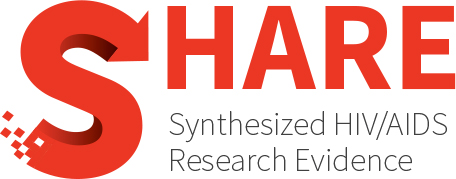Category Archives: Testing
Adolescents’ sexual health during the COVID-19 outbreak: A systematic review
BACKGROUND AND AIMS: The COVID-19 pandemic has greatly disrupted adolescents’ access to sexual health services, resulting in a decline in their overall sexual well-being. This systematic review explored adolescent sexual...
Health service utilization of Black immigrant women residing in the United States: A systematic review
Black immigrants constitute a rapidly growing population group in the U.S. A comprehensive understanding of health services used by Black immigrant women is necessary to support the complex needs of...
Technology-assisted interventions in the delivery of HIV prevention, care, and treatment services in sub-Saharan Africa: Scoping review
BACKGROUND: Sub-Saharan Africa (SSA) accounts for up to 67% of the global HIV burden yet grapples with health system challenges like distant health facilities, low doctor-to-patient ratio, and poor or...
Use of behavior change techniques in digital HIV prevention programs for adolescents and young people: Systematic review
BACKGROUND: HIV infections have caused severe public health and economic burdens to the world. Adolescents and young people continue to constitute a large proportion of newly diagnosed HIV cases. Digital...
Impacts of the COVID-19 pandemic on the HIV care continuum and associated factors in high-income nations: A mixed-methods systematic review
The COVID-19 pandemic has significantly impacted the HIV care continuum (HCC), presenting challenges while also driving positive transformations globally. This study examines the impact of the COVID-19 pandemic on HCC...
Technology-based HIV prevention interventions for men who have sex with men: Systematic review and meta-analysis
BACKGROUND: There remain unmet HIV prevention needs in China, particularly among gay, bisexual, and other men who have sex with men. Technology-based interventions are increasingly used in HIV prevention worldwide....
Preventing unintended pregnancies and HIV through self-care interventions in east and southern Africa: Findings from a structured review
OBJECTIVE: To identify promising interventions targeting young people in East and Southern Africa through self-care practices, with a focus on prevention of unintended pregnancies and HIV and develop four evidence-based...
Acceptability of self-sampling and self-testing for infections: A rapid systematic review on public users’ views
Background Self-sampling and self-testing have been increasingly used for sexually transmitted infections (STIs) and quickly became widespread during the COVID-19 pandemic. User acceptability, preferences, and experiences are important factors affecting...
HIV prevention interventions and research in the philippines for high-risk populations: Proposals from a scoping review of contributing cactors
Despite a global decrease in HIV cases and efforts to reduce HIV incidence in the country, the Philippines has an increasing HIV incidence rate, which is the highest in the...
